This new XRD system is compact, but powerful
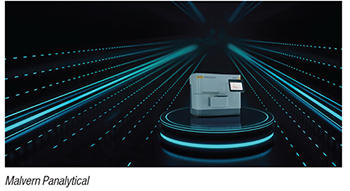 In late February, this company launched a new version of its Aeris compact X-ray diffractometer (XRD; photo). Aeris is a small-footprint system that contains capabilities previously only seen in much larger systems. Building on the family of compact Aeris XRD systems that provide high-quality data from polycrystalline materials at competitive speeds, the new Aeris model is designed for use in all environments. Specifically, grazing-incidence XRD enables the examination of thin films and coatings, while transmission measurements provides more accurate data that are not affected by sample-preparation artefacts. The Aeris XRD’s straightforward operational interface simplifies XRD measurements for the user. The performance of the Aeris is similar to floor-standing systems, and it does not require any external supplies and infrastructure. The Aeris can also be used in a regulated environment with OmniTrust software. — Malvern Panalytical B.V., Almelo, the Netherlands
In late February, this company launched a new version of its Aeris compact X-ray diffractometer (XRD; photo). Aeris is a small-footprint system that contains capabilities previously only seen in much larger systems. Building on the family of compact Aeris XRD systems that provide high-quality data from polycrystalline materials at competitive speeds, the new Aeris model is designed for use in all environments. Specifically, grazing-incidence XRD enables the examination of thin films and coatings, while transmission measurements provides more accurate data that are not affected by sample-preparation artefacts. The Aeris XRD’s straightforward operational interface simplifies XRD measurements for the user. The performance of the Aeris is similar to floor-standing systems, and it does not require any external supplies and infrastructure. The Aeris can also be used in a regulated environment with OmniTrust software. — Malvern Panalytical B.V., Almelo, the Netherlands
Determining gas and fluid migration in oil-well cements
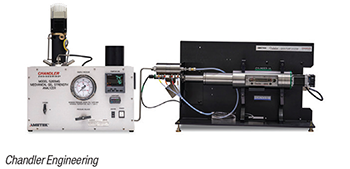 The Model 5265 mechanical gel-strength analyzer (MGSA; photo) directly measures the gel strength development of oil-well cement slurries under downhole conditions. The analyzer allows oil service companies and operators to optimize cement slurries and accurately determine the potential for gas and fluid migration between the casing and formation. The Model 5265 MGSA simulates dynamic slurry conditioning during the placement and transition phase of the cement slurry. The unique analyzer design includes a precision motor coupled with a reaction force transducer that allows the instrument to precisely measure phase changes. The system includes a single-cylinder Quizix Q5120 pump to allow for pulse-free pressure operation. Pulse-free pressure prevents test anomalies induced by pump strokes and quick pressure spikes. — Chandler Engineering, Broken Arrow, Okla.
The Model 5265 mechanical gel-strength analyzer (MGSA; photo) directly measures the gel strength development of oil-well cement slurries under downhole conditions. The analyzer allows oil service companies and operators to optimize cement slurries and accurately determine the potential for gas and fluid migration between the casing and formation. The Model 5265 MGSA simulates dynamic slurry conditioning during the placement and transition phase of the cement slurry. The unique analyzer design includes a precision motor coupled with a reaction force transducer that allows the instrument to precisely measure phase changes. The system includes a single-cylinder Quizix Q5120 pump to allow for pulse-free pressure operation. Pulse-free pressure prevents test anomalies induced by pump strokes and quick pressure spikes. — Chandler Engineering, Broken Arrow, Okla.
Optimize boiler performance with this conductivity analyzer
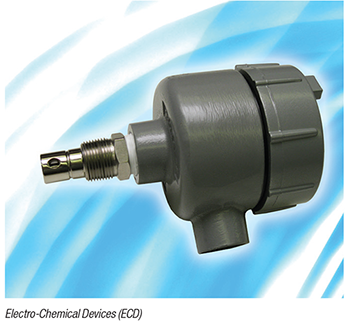 The high-temperature, high-pressure CSX2 conductivity analyzer (photo) helps ensure boiler performance while minimizing maintenance, repairs and extending operational life in a wide range of critical industrial applications requiring water heating and steam. The analyzer is designed for service up to 392°F (200°C) and 250 psig, or 212°F (100°C) and 400 psig. This insertion-style 0.75-in. MNPT, 316 stainless-steel sensor has PEEK insulators and is available with or without an integral signal conditioner. The device measures conductivity over a wide range from 1.0 μS to 50 mS. A wide range of signal conditioners are available for the CSX2 sensor to optimize the conductivity measurement at specific ranges. The Model LQ800 multi-channel controller or the T80 Transmitter have a user-specified signal conditioner that is mounted inside the CSX2 instrument or optionally in a remote junction box. — Electro-Chemical Devices (ECD), Anaheim, Calif.
The high-temperature, high-pressure CSX2 conductivity analyzer (photo) helps ensure boiler performance while minimizing maintenance, repairs and extending operational life in a wide range of critical industrial applications requiring water heating and steam. The analyzer is designed for service up to 392°F (200°C) and 250 psig, or 212°F (100°C) and 400 psig. This insertion-style 0.75-in. MNPT, 316 stainless-steel sensor has PEEK insulators and is available with or without an integral signal conditioner. The device measures conductivity over a wide range from 1.0 μS to 50 mS. A wide range of signal conditioners are available for the CSX2 sensor to optimize the conductivity measurement at specific ranges. The Model LQ800 multi-channel controller or the T80 Transmitter have a user-specified signal conditioner that is mounted inside the CSX2 instrument or optionally in a remote junction box. — Electro-Chemical Devices (ECD), Anaheim, Calif.
Metallurgical sampler for production predictability
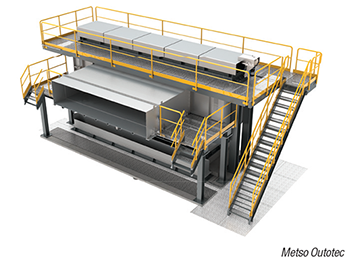 The Linear Metallurgical Sampler (LMS; photo) enables the measurement of material balances, as well as reporting to investors and other stakeholders in compliance with AMIRA P754 and other sampling standards. The solution enables integration with the company’s Courier online analyzers to further improve process control. The LMS incorporates functions to monitor both sampling integrity and sample quality. Its self-diagnostic and self-cleaning systems ensures representative metallurgical samples for improved process audits and production transparency. Maintenance personnel can use self-diagnostics and reporting data to enhance predictive maintenance and spares-management strategies, says the company. Integration of online analyzers will enable different types of sampling data to be combined for production analysis purposes. By combining process history data with different process scenarios, the process control philosophy can be quickly adapted according to the ore type being processed, for instance. This enables improvement of production predictability and control of metallurgical mass balance. — Metso Outotec Corp., Helsinki, Finland
The Linear Metallurgical Sampler (LMS; photo) enables the measurement of material balances, as well as reporting to investors and other stakeholders in compliance with AMIRA P754 and other sampling standards. The solution enables integration with the company’s Courier online analyzers to further improve process control. The LMS incorporates functions to monitor both sampling integrity and sample quality. Its self-diagnostic and self-cleaning systems ensures representative metallurgical samples for improved process audits and production transparency. Maintenance personnel can use self-diagnostics and reporting data to enhance predictive maintenance and spares-management strategies, says the company. Integration of online analyzers will enable different types of sampling data to be combined for production analysis purposes. By combining process history data with different process scenarios, the process control philosophy can be quickly adapted according to the ore type being processed, for instance. This enables improvement of production predictability and control of metallurgical mass balance. — Metso Outotec Corp., Helsinki, Finland
Two analyzers for boiler feedwater, steam and more
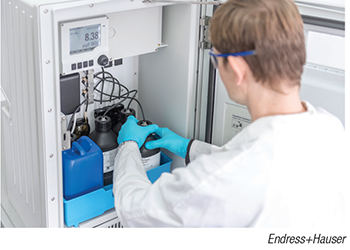 The CA76NA monitors sodium, while the CA80SI (photo) analyzes for silica in boiler feedwater, steam, condensate and ion exchangers. Each analyzer can accept up to six sampling inputs. The CA76NA potentiometric analyzer measures the concentration of dissolved sodium ions. An increase in sodium levels in boiler feedwater indicates the presence of unwanted dissolved impurities. This can cause corrosion, leaks, serious damage and expensive repairs. The analyzer monitors the water/steam circuit in power stations, condensate systems for values indicating ruptures, demineralization systems, steam and cation systems, and mixed-bed exchangers. The Liquiline System CA80SI colorimetric analyzer provides precise online analysis of silica to protect plant equipment from deposits to ensure optimum performance of turbines and ion exchangers. Deposits of insoluble SiO2 on internal boiler walls, heat exchangers and turbine blades have an adverse effect on the efficiency of power plants and increase the risk of unplanned downtime and repairs. For this reason, the silica content in boiler feedwater must be monitored. — Endress+Hauser, Greenwood, Ind.
The CA76NA monitors sodium, while the CA80SI (photo) analyzes for silica in boiler feedwater, steam, condensate and ion exchangers. Each analyzer can accept up to six sampling inputs. The CA76NA potentiometric analyzer measures the concentration of dissolved sodium ions. An increase in sodium levels in boiler feedwater indicates the presence of unwanted dissolved impurities. This can cause corrosion, leaks, serious damage and expensive repairs. The analyzer monitors the water/steam circuit in power stations, condensate systems for values indicating ruptures, demineralization systems, steam and cation systems, and mixed-bed exchangers. The Liquiline System CA80SI colorimetric analyzer provides precise online analysis of silica to protect plant equipment from deposits to ensure optimum performance of turbines and ion exchangers. Deposits of insoluble SiO2 on internal boiler walls, heat exchangers and turbine blades have an adverse effect on the efficiency of power plants and increase the risk of unplanned downtime and repairs. For this reason, the silica content in boiler feedwater must be monitored. — Endress+Hauser, Greenwood, Ind.
Gas analyzers for qualitative and quantitative analysis
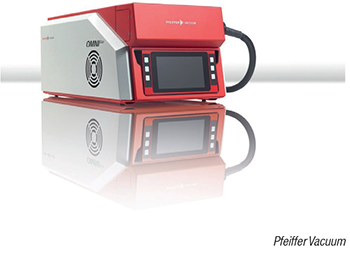 OmniStar (photo) and ThermoStar GSD 350 are compact, portable benchtop analyzers for analyzing gases at atmospheric pressure. They are particularly used for applications in chemical processes, in the semiconductor industry, metallurgy, fermentation, catalysis, freeze-drying and environmental analysis. The gas inlet is fitted with a heated capillary for use at temperatures up to 350°C. This prevents vapors from condensing during process gas analysis. Thanks to the two-stage inlet system, an almost segregation-free gas supply is possible. The ThermoStar solution was specially developed for coupling with thermo balances. The inlet system with a quartz capillary and a platinum orifice ensures that even the smallest concentrations can be analyzed. Unlike other analytical methods, such as FTIR or GC-FID, the two new devices allow simultaneous detection of all gases within the mass range. — Pfeiffer Vacuum GmbH, Asslar, Germany
OmniStar (photo) and ThermoStar GSD 350 are compact, portable benchtop analyzers for analyzing gases at atmospheric pressure. They are particularly used for applications in chemical processes, in the semiconductor industry, metallurgy, fermentation, catalysis, freeze-drying and environmental analysis. The gas inlet is fitted with a heated capillary for use at temperatures up to 350°C. This prevents vapors from condensing during process gas analysis. Thanks to the two-stage inlet system, an almost segregation-free gas supply is possible. The ThermoStar solution was specially developed for coupling with thermo balances. The inlet system with a quartz capillary and a platinum orifice ensures that even the smallest concentrations can be analyzed. Unlike other analytical methods, such as FTIR or GC-FID, the two new devices allow simultaneous detection of all gases within the mass range. — Pfeiffer Vacuum GmbH, Asslar, Germany
A sixth-generation benchtop XRD diffractometer
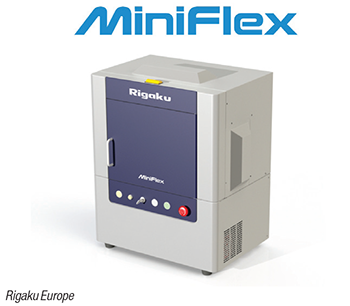 This company provides a complete line of X-ray analytical instruments and components, including benchtop X-ray diffraction (XRD) and X-ray fluorescence (XRF) systems, handheld analyzers, X-ray optics and detectors. Among the latest instruments presented at the virtual Analytica Conference (October 19–23, 2020; www.analytica-virtual.com) was the sixth-generation MiniFlex benchtop XRD diffractometer (photo). This multipurpose benchtop XRD system is able to determine crystalline phase identification and phase quantification and perform qualitative and quantitative analysis of polycrystalline materials. Also, the SmartLab high-resolution XRD is an automated, multipurpose system that features guidance software for powder diffraction, thin-film metrology, small-angle X-ray scattering, in-plane scattering and operando measurements. — Rigaku Europe SE, Neu-Isenburg, Germany
This company provides a complete line of X-ray analytical instruments and components, including benchtop X-ray diffraction (XRD) and X-ray fluorescence (XRF) systems, handheld analyzers, X-ray optics and detectors. Among the latest instruments presented at the virtual Analytica Conference (October 19–23, 2020; www.analytica-virtual.com) was the sixth-generation MiniFlex benchtop XRD diffractometer (photo). This multipurpose benchtop XRD system is able to determine crystalline phase identification and phase quantification and perform qualitative and quantitative analysis of polycrystalline materials. Also, the SmartLab high-resolution XRD is an automated, multipurpose system that features guidance software for powder diffraction, thin-film metrology, small-angle X-ray scattering, in-plane scattering and operando measurements. — Rigaku Europe SE, Neu-Isenburg, Germany
A powerful GC-MS for research and development needs
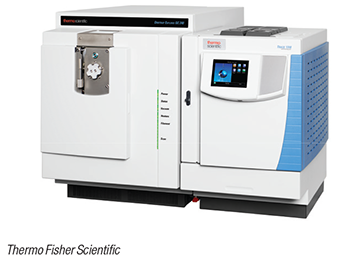 Addressing the need for increased flexibility, speed and accuracy in research applications, a new gas-chromatography (GC) high-resolution mass spectrometer (MS) has been introduced with “unrivalled” mass resolving power, sensitivity and wide dynamic range. With the latest system architecture and instrument control software, the system provides simple yet powerful data acquisition capabilities, addressing the most demanding analytical challenges. The Orbitrap Exploris GC 240 MS (photo) has a resolving power of 240,000. By delivering both quantitative and qualitative information from a single injection, the new system enables precise and comprehensive compound identification, allowing researchers to make fast and accurate discoveries. The Orbitrap Exploris GC 240 MS also provides the flexibility to tackle a diverse range of analytical challenges, from identifying unknown contaminants and extractables and leachables, to applied quantification and metabolomics. — Thermo Fisher Scientific Inc., Austin, Tex.
Addressing the need for increased flexibility, speed and accuracy in research applications, a new gas-chromatography (GC) high-resolution mass spectrometer (MS) has been introduced with “unrivalled” mass resolving power, sensitivity and wide dynamic range. With the latest system architecture and instrument control software, the system provides simple yet powerful data acquisition capabilities, addressing the most demanding analytical challenges. The Orbitrap Exploris GC 240 MS (photo) has a resolving power of 240,000. By delivering both quantitative and qualitative information from a single injection, the new system enables precise and comprehensive compound identification, allowing researchers to make fast and accurate discoveries. The Orbitrap Exploris GC 240 MS also provides the flexibility to tackle a diverse range of analytical challenges, from identifying unknown contaminants and extractables and leachables, to applied quantification and metabolomics. — Thermo Fisher Scientific Inc., Austin, Tex.
Compact laser particle-size analyzer with extra wide range
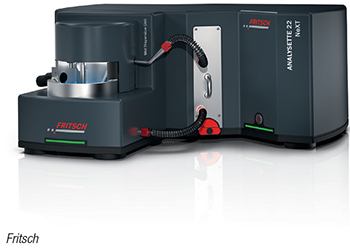 The Analysette 22 NeXT laser particle-size analyzer (photo) comes in two versions: the Micro version, which covers the measurements from 0.5 to 1,500µm, and the Nano version, which has an extra-wide measurement range from 0.01 to 3,800µm. The NeXT Generation performs the entire measurement process in less than a minute using a flexible-to-program SOP (standard operating procedure). Results are reproducible, and additional parameters, such as temperature and pH during wet dispersion, can be recorded. A powerful, adjustable-speed centrifugal pump distributes the sample uniformly in the entire circuit for stable measurements. An optional ultrasonic box can be added to the sample circuit for samples that tend to agglomerate. — Fritsch GmbH, Idar-Oberstein, Germany
The Analysette 22 NeXT laser particle-size analyzer (photo) comes in two versions: the Micro version, which covers the measurements from 0.5 to 1,500µm, and the Nano version, which has an extra-wide measurement range from 0.01 to 3,800µm. The NeXT Generation performs the entire measurement process in less than a minute using a flexible-to-program SOP (standard operating procedure). Results are reproducible, and additional parameters, such as temperature and pH during wet dispersion, can be recorded. A powerful, adjustable-speed centrifugal pump distributes the sample uniformly in the entire circuit for stable measurements. An optional ultrasonic box can be added to the sample circuit for samples that tend to agglomerate. — Fritsch GmbH, Idar-Oberstein, Germany
A next-generation gas detector for finding leaks
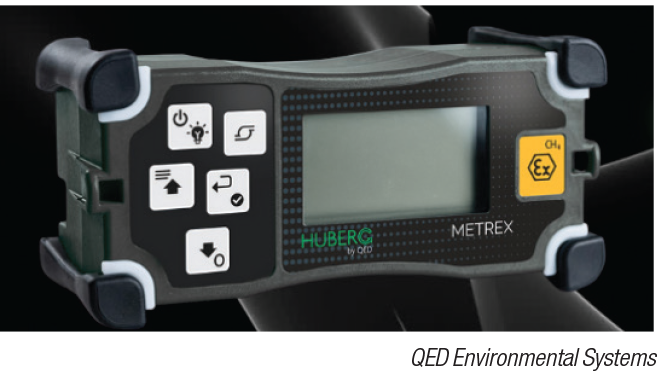 The new Metrex gas-detection instrument (photo, p. 19) is designed for pre-localization, localization and classification of leaks in natural gas distribution networks. The user interface ensures the Metrex is suitable for first-responder technicians who handle suspected gas leaks. Other key applications include bar-hole gas measurement testing, purged gas lines and enclosed-space monitoring. The Metrex is significantly reduced in size compared to its predecessor and is also 50% lighter. Gas measurements are displayed on screen to the user and easy to understand. The IP65-certified ingress rating adds to the robustness of the instrument when operating in adverse weather conditions. ATEX certified (II 2 G Ex db ib IIB T4 Gb), the new Metrex has been classified to be safely operated in designated hazardous locations. Unlike traditional flame-ionization detectors, the Metrex does not require a technician to carry calibration gas cylinders, because it can perform a user calibration in air. It detects and measures gas ranges from 0 to 10,000 parts per million (ppm). — QED Environmental Systems, Ltd., Coventry, U.K.
The new Metrex gas-detection instrument (photo, p. 19) is designed for pre-localization, localization and classification of leaks in natural gas distribution networks. The user interface ensures the Metrex is suitable for first-responder technicians who handle suspected gas leaks. Other key applications include bar-hole gas measurement testing, purged gas lines and enclosed-space monitoring. The Metrex is significantly reduced in size compared to its predecessor and is also 50% lighter. Gas measurements are displayed on screen to the user and easy to understand. The IP65-certified ingress rating adds to the robustness of the instrument when operating in adverse weather conditions. ATEX certified (II 2 G Ex db ib IIB T4 Gb), the new Metrex has been classified to be safely operated in designated hazardous locations. Unlike traditional flame-ionization detectors, the Metrex does not require a technician to carry calibration gas cylinders, because it can perform a user calibration in air. It detects and measures gas ranges from 0 to 10,000 parts per million (ppm). — QED Environmental Systems, Ltd., Coventry, U.K.
Transmitter-style GC measures sulfur and natural gas energy
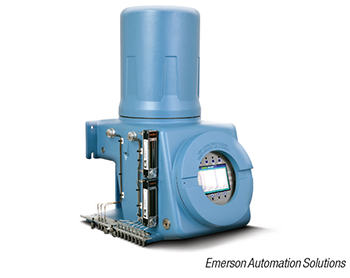 The Rosemount 700XA gas chromatograph (GC; photo) is said to be the industry’s first single analyzer for measuring sulfur compounds, as well as the energy content of natural gas. The analyzer offers a cost-effective approach to meet gas-quality and heating-value requirements for pipeline distribution, processing of liquified natural gas (LNG), mixed and high-purity natural gas liquids (NGLs), as well as international LNG commerce. While previous generations of GCs have required the purchase of separate analyzers for sulfur measurement and heating-value analysis, the new Rosemount 700XA gas chromatograph is equipped with a micro-flame photometric detector (FPD), allowing users to reduce initial equipment cost by as much as 50% and footprint requirements by up to 40%, says the manufacturer. The 700XA is a Class 1, Division 1, explosion-proof, ATEX/IECEX safety-rated analyzer, eliminating instrument air requirements for purging or the need for additional protection. — Emerson Automation Solutions, Shakopee, Minn.
The Rosemount 700XA gas chromatograph (GC; photo) is said to be the industry’s first single analyzer for measuring sulfur compounds, as well as the energy content of natural gas. The analyzer offers a cost-effective approach to meet gas-quality and heating-value requirements for pipeline distribution, processing of liquified natural gas (LNG), mixed and high-purity natural gas liquids (NGLs), as well as international LNG commerce. While previous generations of GCs have required the purchase of separate analyzers for sulfur measurement and heating-value analysis, the new Rosemount 700XA gas chromatograph is equipped with a micro-flame photometric detector (FPD), allowing users to reduce initial equipment cost by as much as 50% and footprint requirements by up to 40%, says the manufacturer. The 700XA is a Class 1, Division 1, explosion-proof, ATEX/IECEX safety-rated analyzer, eliminating instrument air requirements for purging or the need for additional protection. — Emerson Automation Solutions, Shakopee, Minn.
TDL analyzers for chlor-alkali and combustion processes
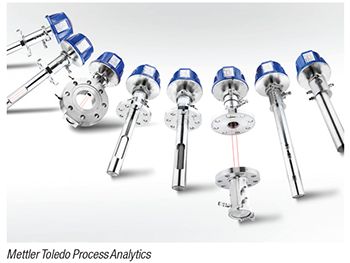 This company recently enhanced its GPro 500 tunable-diode laser (TDL) gas analyzer series (photo) for better management of corrosion in the chlor-alkali industry and for greater combustion control, as well as increased O2 -measurement accuracy. The GPro 500 TDL H2O ppm sensor is designed for the measurement of very low moisture levels for corrosion prevention in chlor-alkali plants. The response time of the GPro 500 TDL moisture sensor is below 4 s, which is up to 50 times faster than commonly used phosphorus pentoxide sensors. In situ installation with the GPro 500 can avoid risks of toxic gas leaks and the frequent maintenance typical of extractive systems used with P2O5 sensors. The new dual-gas CO ppm/CH4 % GPro 500 analyzer is designed for combustion applications, which allows measurement of CO in the presence of CH4. Moreover, in large furnaces with multiple burners, CH4 measurement provides additional security by detecting a possible malfunctioning burner that has not ignited or ignited only partially. The GPro 500’s new MR3 Cell enables O2 measurement in small pipes. With patented technology, the MR Cell multiplies the path length by a factor of 2 to 3, therefore lowering the detection limit achievable in small spaces. — Mettler Toledo Process Analytics, Urdorf, Switzerland
This company recently enhanced its GPro 500 tunable-diode laser (TDL) gas analyzer series (photo) for better management of corrosion in the chlor-alkali industry and for greater combustion control, as well as increased O2 -measurement accuracy. The GPro 500 TDL H2O ppm sensor is designed for the measurement of very low moisture levels for corrosion prevention in chlor-alkali plants. The response time of the GPro 500 TDL moisture sensor is below 4 s, which is up to 50 times faster than commonly used phosphorus pentoxide sensors. In situ installation with the GPro 500 can avoid risks of toxic gas leaks and the frequent maintenance typical of extractive systems used with P2O5 sensors. The new dual-gas CO ppm/CH4 % GPro 500 analyzer is designed for combustion applications, which allows measurement of CO in the presence of CH4. Moreover, in large furnaces with multiple burners, CH4 measurement provides additional security by detecting a possible malfunctioning burner that has not ignited or ignited only partially. The GPro 500’s new MR3 Cell enables O2 measurement in small pipes. With patented technology, the MR Cell multiplies the path length by a factor of 2 to 3, therefore lowering the detection limit achievable in small spaces. — Mettler Toledo Process Analytics, Urdorf, Switzerland
Inline viscosity measurement of coatings and resins
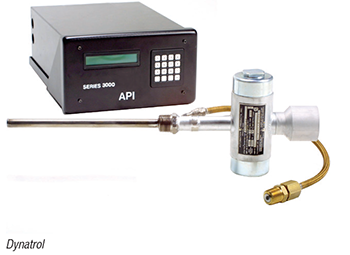 Designed for high accuracy with fast and continuous readings, the Dynatrol CL-10DV viscometer (photo) operates in a wide range of conditions. It provides excellent results for coatings and resins, as well as supplying outstanding repeatability in Newtonian or shear-thinning liquids. The viscometer utilizes a unique vibratory principle to provide continuous measurement at online process conditions. This eliminates the need for sampling and provides exceptional accuracy. With no moving parts, it is virtually wear-free, ensuring a long operating life. The instrument is CSA NRTL/C approved for Class 1 Group D Div 1. — Automation Products, Inc. – Dynatrol Div., Houston
Designed for high accuracy with fast and continuous readings, the Dynatrol CL-10DV viscometer (photo) operates in a wide range of conditions. It provides excellent results for coatings and resins, as well as supplying outstanding repeatability in Newtonian or shear-thinning liquids. The viscometer utilizes a unique vibratory principle to provide continuous measurement at online process conditions. This eliminates the need for sampling and provides exceptional accuracy. With no moving parts, it is virtually wear-free, ensuring a long operating life. The instrument is CSA NRTL/C approved for Class 1 Group D Div 1. — Automation Products, Inc. – Dynatrol Div., Houston
Technique approved for water content in petrochemicals
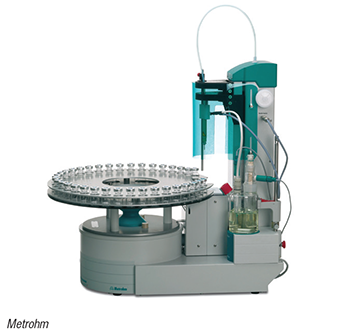 Since they can be poorly soluble, viscous and often highly contaminated, determining the water content in lubricants, hydraulic oils and other petrochemical samples can challenging. Addressing these challenges, ASTM has revised standard method D6304. The revised standard now includes the Karl Fischer (KF) oven technique. Users can conveniently and accurately determine water content in up to 35 samples automatically by coulometric Karl Fischer titration (photo). Using the KF oven technique, the oil matrix does not come into contact with the titration cell at all. Instead, the samples are introduced in single-use vials, which are put on the rack of an oven sample processor. Heating vial by vial, the water contained in the samples is evaporated. A constant stream of an inert carrier gas is used to bring the water fraction into the titration cell, where it is determined coulometrically. The sample matrix stays in the vials, which are disposed of after the titration. The benefits of this method are considerable, including: no contamination of the KF titration cell; no matrix interferences; less solvents needed; and better reproducibility of results. — Metrohm AG, Herisau, Switzerland
Since they can be poorly soluble, viscous and often highly contaminated, determining the water content in lubricants, hydraulic oils and other petrochemical samples can challenging. Addressing these challenges, ASTM has revised standard method D6304. The revised standard now includes the Karl Fischer (KF) oven technique. Users can conveniently and accurately determine water content in up to 35 samples automatically by coulometric Karl Fischer titration (photo). Using the KF oven technique, the oil matrix does not come into contact with the titration cell at all. Instead, the samples are introduced in single-use vials, which are put on the rack of an oven sample processor. Heating vial by vial, the water contained in the samples is evaporated. A constant stream of an inert carrier gas is used to bring the water fraction into the titration cell, where it is determined coulometrically. The sample matrix stays in the vials, which are disposed of after the titration. The benefits of this method are considerable, including: no contamination of the KF titration cell; no matrix interferences; less solvents needed; and better reproducibility of results. — Metrohm AG, Herisau, Switzerland
Space-saving autoinjector/autosampler for GC
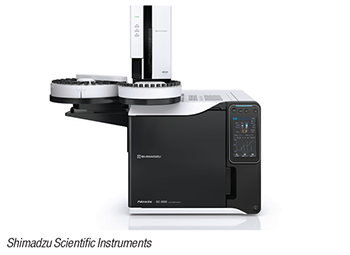 The AOC-30 Series autoinjector/autosampler (photo) is designed to enable gas chromatography (GC) users to produce high-quality results with less downtime. The AOC-30 automatic sample-injection system automates analysis, reduces an operator’s workload, and enables continuous analysis with a high degree of accuracy that cannot be achieved by manual operation. The structure of the company’s Xtra Life inlet septa results in excellent injection durability and enables continuous analysis that is approximately ten times that of conventional systems — up to 1,000 injections before replacement, says the company. Advanced sample-washing functionality provides continuous analysis without the worry of running out of solvent. Four 4-mL vials can be used in a single tower, and twelve 4 mL-vials can be used with the full tower and sampler system. Users can customize cleaning solvent types and cleaning sequences to optimize the cleaning effect for each analysis. The single-tower system provides automated analysis of up to 30 samples, covering a wide range of analysis needs. Another sample tower or samplers can be added to increase analysis capacity and flexibility. — Shimadzu Scientific Instruments Inc., Columbia, Md.
The AOC-30 Series autoinjector/autosampler (photo) is designed to enable gas chromatography (GC) users to produce high-quality results with less downtime. The AOC-30 automatic sample-injection system automates analysis, reduces an operator’s workload, and enables continuous analysis with a high degree of accuracy that cannot be achieved by manual operation. The structure of the company’s Xtra Life inlet septa results in excellent injection durability and enables continuous analysis that is approximately ten times that of conventional systems — up to 1,000 injections before replacement, says the company. Advanced sample-washing functionality provides continuous analysis without the worry of running out of solvent. Four 4-mL vials can be used in a single tower, and twelve 4 mL-vials can be used with the full tower and sampler system. Users can customize cleaning solvent types and cleaning sequences to optimize the cleaning effect for each analysis. The single-tower system provides automated analysis of up to 30 samples, covering a wide range of analysis needs. Another sample tower or samplers can be added to increase analysis capacity and flexibility. — Shimadzu Scientific Instruments Inc., Columbia, Md.